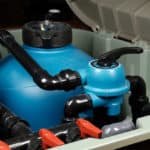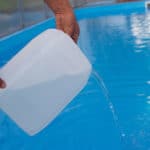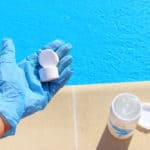Shocking your pool, if you do it correctly, can raise the chlorine level in your swimming pool to up to five times the normal safe swimming level.
Neither your skin nor your eyeballs wants annnnny part of that business.
But the question is how soon after shocking your pool can you get back in?
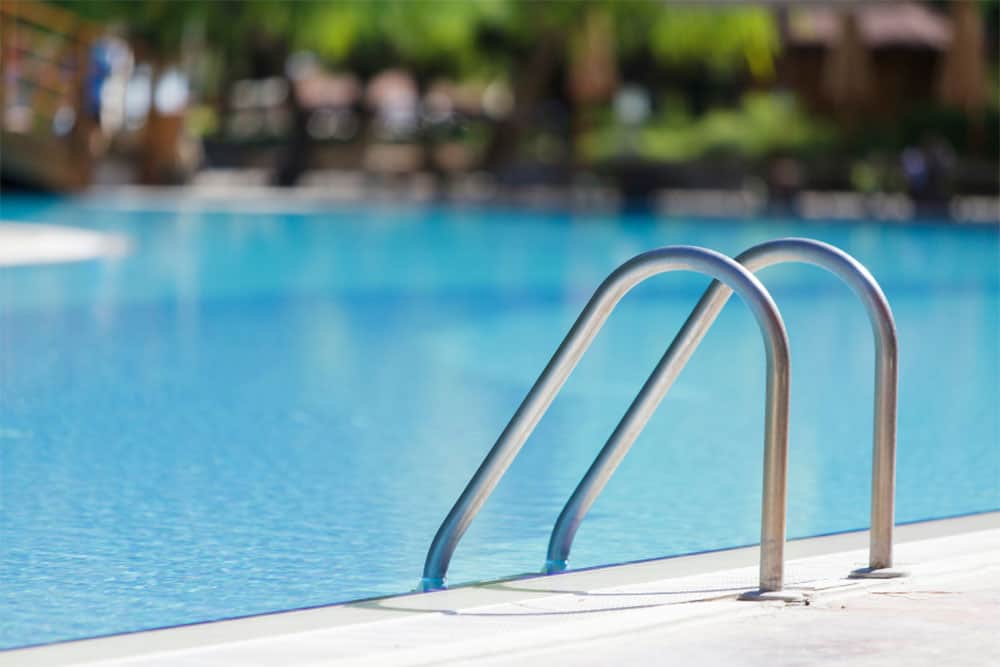
How long before you’re confident that the shocking has done the job you want it to do, killing off the microbes, bacteria and algae that build up in any swimming pool and clearing the water?
And how long before you’re sure that it won’t burn your skin or eyes when you take a dip?
There’s both a time-based answer to this question, and a chemistry-based answer.
You may not be surprised to learn that the chemistry-based answer is significantly more precise, but will probably involve you investing in some equipment, whereas the time-based answer requires nothing but patience.
Patience, as the sun beats down.
Patience, as the pool ripples gently in an inviting breeze.
Patience, as your friends turn up unannounced, ready for all the pool fun in the world.
Patience, while the heat indoors turns you into jerky and makes all your clothes uncomfortable to wear…
Ahem. Sorry. “Patience is hard” is the message we’re trying to get across.
It’s also slightly less than fair because don’t forget, you’ll be shocking your pool at least every two weeks. Plus if it’s extra hot.
Or if it rains. Or if you’ve actually had a pool party recently – because all those things can mess with the water chemistry of your pool and turn it into microbe and algae soup.
So there’s a lot of shocking your pool is going to go through, all the way through pool season.
If you have to be patient on that regular a basis, you’re losing out on some primo pool time.
Why Is This A Thing?
Well, because there’s disagreement in the time-based solution.
Some pool shocking experts claim you can get back in the pool just 24 hours after you shock it.
And since it’s best to shock your pool after sundown, that’s not so bad, because at least for a good handful of those hours, you’ll be asleep.
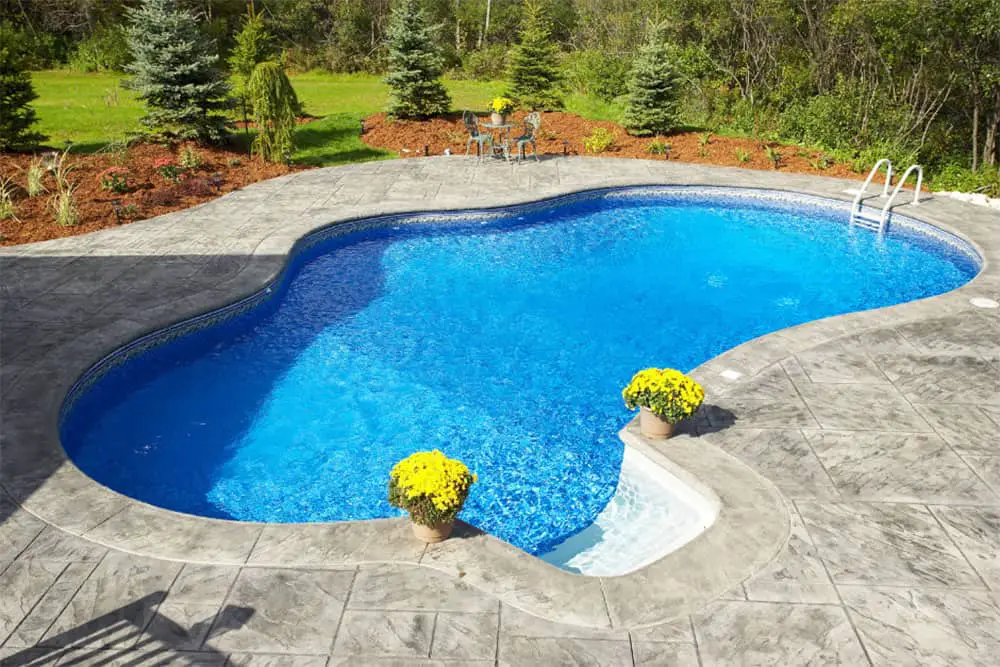
So – 24 hours loses you a day of pool-time, minus sleep-time, every time you do it. A day out of every two week period. You can handle that, right?
But some other, equally expert pool shockers say it’s best to wait a full 48 hours before risking returning to the coolness of the pool each time you shock it.
If we assume that peak pool season runs for a full four months – June, July, August, and September, waiting 48 hours after every shocking works out at almost 8 days across the scope of the season when the pool’s not in use!
More than a whole week of waiting for the pool to come back down from peak chlorination to safety.
And that’s not counting any of those other shockings you’re called on to do – one at the start of the season before you get in the pool for the first time, one every time it gets too hot, once every time it rains, once every time you have a lot of people in the pool…
It begins to feel as though having a swimming pool is almost more hard work than it’s worth (We said almost!).
But then of course, the risks of going back into the water too soon are high, too. Extra-strong chlorinated water can be extremely dangerous if you happen to take a plunge into it.
Burning skin, streaming eyes – and that’s always assuming you don’t get a throat full of it. That’s why the time-based system for deciding when it’s safe is such an agony.
If you’ve seen the movie Jaws, it’s the dilemma at the heart of that story – how do you know when it’s safe to go back in the water? (PS – if you’ve never seen the movie, stream it when you get the chance - just possibly not during pool season).
That’s why the chemistry-based way of determining when it’s safe to get back in the water is such a boon.
It cuts through all concerns over whether 24 or 48 hours is the safer option, while letting you make the most use of your pool after shocking it.
What you’re waiting for after shocking your pool is for the chlorine content of the water to sink back to 5 parts per million.
That’s not a thing you’ll ever be able to tell by just looking at the pool, or sniffing it, or any other such mystic means of sensing the chlorination level.
What you need to invest in to get quick, simple, definitive results is a chlorine photometer and some testing strips.
The principle of this testing will be familiar to anyone who’s ever taken a home test for diabetic blood sugar, or a pregnancy test, come to that.
You dip the testing strip into the pool, wait for the reactive paper to turn a particular color, and either insert it into the photometer for an automatic reading of the number of parts per million of chlorine are in the pool, or compare the color of the testing strip to a handy chart to determine how much chlorine remains in the water.
If you do this immediately after applying your pool shock treatment, of course, the results will be off the chart – pretty much literally.
But wait at least 24 hours (that seems to be the minimum time experts advise – sorry!), then test your pool with a chlorine photometer.
If your results are at or just under 5 parts per million, you could be in for a really good day, because it means your pool’s chlorine levels have returned to their safe, germ-killing levels and you can get back in the water.
If the levels are much above 5 parts per million… wait a little longer and re-test.
It’s also always worth checking the instructions on your chosen pool shock treatment, as the different chemical mixtures can have different waiting times.
Everyone wants to use their pool as much as possible in pool season.
But once you’ve shocked your pool, be safe – wait as long as you need to before you get back in the pool.
You’re going to have a pool for years to come. If you invest in a chlorine photometer, you can be certain as soon as it’s safe to get back in your pool after shocking it clean.




